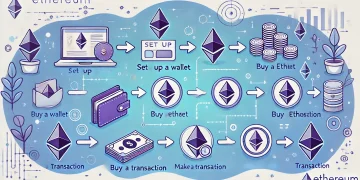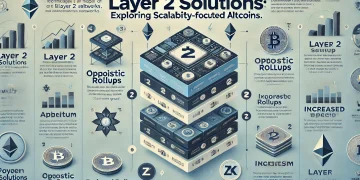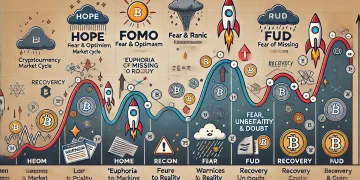As cryptocurrencies continue to rise in popularity, storing digital assets securely has become a top priority for investors. One of the most important decisions you’ll make when managing your cryptocurrency is choosing between hot wallets and cold wallets for storage. Both types have distinct advantages and drawbacks, and understanding how they work is essential for keeping your funds safe. In this comprehensive guide, we will explain the key differences between hot and cold storage, how each type of wallet operates, and which one is best suited for your needs.
Table of Contents
- What is a Cryptocurrency Wallet?
- The Basics of Hot and Cold Storage
- 2.1 What is Hot Storage?
- 2.2 What is Cold Storage?
- Hot Wallets Explained
- 3.1 Types of Hot Wallets
- 3.2 Advantages of Hot Wallets
- 3.3 Risks and Drawbacks of Hot Wallets
- Cold Wallets Explained
- 4.1 Types of Cold Wallets
- 4.2 Advantages of Cold Wallets
- 4.3 Risks and Drawbacks of Cold Wallets
- Security Differences Between Hot and Cold Storage
- When to Use Hot Wallets
- When to Use Cold Wallets
- Hot vs. Cold Wallet Costs
- Hybrid Solutions: Combining Hot and Cold Wallets
- Popular Hot Wallets in the Market
- Popular Cold Wallets in the Market
- How to Set Up a Hot Wallet
- How to Set Up a Cold Wallet
- Backing Up and Recovering Wallets
- FAQs About Hot vs. Cold Storage
1. What is a Cryptocurrency Wallet?
A cryptocurrency wallet is a digital tool that allows users to store, send, and receive cryptocurrencies like Bitcoin, Ethereum, and other altcoins. Unlike traditional wallets, crypto wallets do not physically hold currency. Instead, they store cryptographic keys—specifically, the public key (used to receive funds) and the private key (used to access and control your funds). The wallet interacts with blockchain networks to manage your holdings.
2. The Basics of Hot and Cold Storage
Cryptocurrency wallets are typically categorized into two main types: hot storage (wallets connected to the internet) and cold storage (wallets kept offline). Understanding the difference between the two is key to making the right choice for storing your digital assets.
2.1 What is Hot Storage?
Hot storage refers to cryptocurrency wallets that are connected to the internet. These wallets are accessible online, making them more convenient for daily transactions and frequent trading. However, their online nature makes them more vulnerable to cyberattacks.
2.2 What is Cold Storage?
Cold storage, on the other hand, involves wallets that are completely offline. Because these wallets are not connected to the internet, they are much less susceptible to hacks and other cyber threats. Cold wallets are ideal for long-term storage or large holdings of cryptocurrency.
3. Hot Wallets Explained
A hot wallet is any cryptocurrency wallet that is connected to the internet. They are commonly used by people who engage in frequent transactions, such as day traders or those making regular payments with cryptocurrency.
3.1 Types of Hot Wallets
- Desktop Wallets: These are software programs installed on your computer. They provide direct access to your private keys but are only as secure as the device they are installed on.
- Mobile Wallets: Available as apps on smartphones, mobile wallets offer convenient, on-the-go access to your cryptocurrency.
- Web Wallets: These are hosted online and accessible through a web browser. Examples include wallets provided by exchanges or dedicated platforms like MetaMask.
3.2 Advantages of Hot Wallets
- Convenience: Hot wallets allow instant access to your funds, making them ideal for daily use and frequent transactions.
- User-Friendly: Most hot wallets are easy to set up and use, even for beginners.
- Integration with Exchanges: Many hot wallets are linked to cryptocurrency exchanges, enabling quick trading and transfers.
3.3 Risks and Drawbacks of Hot Wallets
- Security Risks: Since hot wallets are connected to the internet, they are more vulnerable to hacking, phishing attacks, and malware.
- Reliance on Device Security: The security of a hot wallet is largely dependent on the security of the device it’s installed on. If your computer or smartphone is compromised, so is your wallet.
- Not Ideal for Large Holdings: Because of the heightened risk, it’s generally not recommended to store large amounts of cryptocurrency in hot wallets.
4. Cold Wallets Explained
A cold wallet is a cryptocurrency wallet that is entirely offline, making it immune to online attacks. These wallets are typically used by long-term investors who want to store large amounts of cryptocurrency securely over extended periods.
4.1 Types of Cold Wallets
- Hardware Wallets: Physical devices (like USB drives) that store your private keys offline. Popular examples include the Ledger Nano S and Trezor.
- Paper Wallets: A printed piece of paper that contains your public and private keys. The keys are generated offline, and the paper must be stored securely to avoid physical damage.
- Air-Gapped Devices: A dedicated device, such as a disconnected computer or smartphone, that has never been connected to the internet.
4.2 Advantages of Cold Wallets
- Maximum Security: Since cold wallets are offline, they are immune to online threats like hacking and phishing.
- Best for Long-Term Storage: Cold wallets are ideal for “HODLing” (holding onto cryptocurrency for the long term), especially for large holdings.
- Less Dependent on Third Parties: Cold wallets give you complete control over your private keys without relying on an online service.
4.3 Risks and Drawbacks of Cold Wallets
- Physical Damage or Loss: Cold wallets, particularly paper and hardware wallets, are susceptible to physical damage, theft, or being lost.
- Less Convenient: Because cold wallets are offline, accessing your funds for transactions is more time-consuming and requires extra steps.
- Upfront Cost: Hardware wallets require an initial purchase, and while they are not expensive, the cost can be a barrier for some users.
5. Security Differences Between Hot and Cold Storage
The biggest difference between hot and cold wallets is security. Hot wallets, being online, are always at risk of being hacked. Although many hot wallets implement security measures like two-factor authentication (2FA), they are not foolproof. Cold wallets, by contrast, are disconnected from the internet, making them virtually immune to cyberattacks. The only way to steal funds from a cold wallet would be to physically access the wallet and private keys.
For this reason, cold wallets are considered the most secure way to store cryptocurrency, especially for long-term holdings and large amounts. However, hot wallets are more practical for daily transactions and short-term trading.
6. When to Use Hot Wallets
Hot wallets are ideal for users who need:
- Quick and Frequent Access: If you’re making regular cryptocurrency transactions, whether for trading or purchases, a hot wallet offers the convenience you need.
- Small to Moderate Holdings: Given the heightened security risks, hot wallets are best suited for holding smaller amounts of cryptocurrency that you intend to use regularly.
- DeFi and dApp Interaction: Hot wallets are also used for interacting with decentralized finance (DeFi) platforms and decentralized applications (dApps), where quick access to funds is crucial.
7. When to Use Cold Wallets
Cold wallets are ideal for users who need:
- Long-Term Storage: If you plan to hold onto your cryptocurrency for a long period without frequent transactions, a cold wallet provides the security you need.
- Large Amounts of Cryptocurrency: If you’re storing a significant amount of cryptocurrency, keeping it offline in a cold wallet minimizes the risk of theft or loss.
- Maximum Security: Cold wallets are best for those who prioritize security above convenience, especially for high-value assets.
8. Hot vs. Cold Wallet Costs
Hot wallets are typically free to use. Desktop, mobile, and web wallets are available for download at no cost, and most exchanges provide hot wallets as part of their services. Cold wallets, particularly hardware wallets, involve upfront costs. High-quality hardware wallets range from $50 to $200, depending on the brand and features.
While cold wallets require a financial investment, the cost is often worth the peace of mind they provide in terms of enhanced security.
9. Hybrid Solutions: Combining Hot and Cold Wallets
Many cryptocurrency users adopt a hybrid approach, using both hot and cold wallets to maximize security while retaining some convenience. The idea is to store the bulk of your funds in a cold wallet for security and keep a smaller portion in a hot wallet for daily transactions.
For example, you might keep 90% of your holdings in a cold wallet and 10% in a hot wallet for trading, spending, or interacting with DeFi platforms. This way, you minimize risk while still maintaining quick access to your funds when needed.
10. Popular Hot Wallets in the Market
Some of the most popular hot wallets include:
- MetaMask: A web wallet known for its ease of use and compatibility with Ethereum-based tokens.
- Trust Wallet: A mobile wallet that supports a wide range of cryptocurrencies.
- Exodus: A user-friendly desktop wallet with built-in exchange functionality.
11. Popular Cold Wallets in the Market
Popular cold wallets include:
- Ledger Nano X: A leading hardware wallet known for its security features and support for multiple cryptocurrencies.
- Trezor Model T: Another top hardware wallet with advanced security features and a user-friendly interface.
- Coldcard Wallet: A Bitcoin-focused hardware wallet offering high-level security for advanced users.
12. How to Set Up a Hot Wallet
Setting up a hot wallet is generally straightforward:
- Download the Wallet: Choose a trusted wallet provider and download the app or software.
- Create an Account: Follow the prompts to create a new wallet.
- Backup Your Recovery Phrase: Write down the recovery phrase (usually 12-24 words) provided by the wallet. This is crucial for recovering your funds if you lose access to the wallet.
- Enable Security Features: Activate two-factor authentication (2FA) and set a strong password to enhance security.
13. How to Set Up a Cold Wallet
Setting up a cold wallet, especially a hardware wallet, involves a few more steps:
- Purchase the Wallet: Buy a hardware wallet from a reputable source (directly from the manufacturer is best).
- Initialize the Wallet: Follow the manufacturer’s instructions to set up the device, including creating a new wallet.
- Write Down Your Seed Phrase: As with a hot wallet, write down the recovery seed phrase and store it securely.
- Transfer Funds: Transfer your cryptocurrency from an exchange or hot wallet to the cold wallet for long-term storage.
14. Backing Up and Recovering Wallets
Backing up your wallet is essential for recovering your funds in case your device is lost or damaged. The recovery or seed phrase you receive during setup is the most important backup you’ll have. Never share your recovery phrase with anyone, and store it in a safe place, such as a secure physical location like a safe deposit box.
If you lose access to your wallet, you can restore it on a new device using your recovery phrase. This is why it’s vital to back up your phrase as soon as you set up your wallet.
15. FAQs About Hot vs. Cold Storage
Q1: Can I use both hot and cold wallets at the same time?
Yes, many users combine hot and cold wallets for flexibility. You can use a hot wallet for daily transactions and a cold wallet for long-term storage.
Q2: What happens if I lose my cold wallet?
As long as you have your recovery phrase, you can recover your funds using another device or wallet.
Q3: Are hot wallets safe to use?
Hot wallets are generally safe if you use proper security measures like two-factor authentication, but they are more vulnerable to hacking than cold wallets.
Q4: How much should I store in a hot wallet?
It’s best to store only small amounts of cryptocurrency in a hot wallet for transactions and keep larger holdings in cold storage for safety.
Q5: Are cold wallets difficult to use?
Cold wallets, especially hardware wallets, can be a bit more complex to set up and use compared to hot wallets, but they offer significantly better security.
Q6: What’s the safest type of wallet for cryptocurrency?
Cold wallets, particularly hardware wallets, are considered the safest way to store cryptocurrency for long-term storage.
Conclusion
When it comes to storing cryptocurrency, the choice between hot and cold wallets depends on your needs. Hot wallets offer convenience and are ideal for frequent transactions, while cold wallets provide unmatched security for long-term storage of large amounts of cryptocurrency. Many users find that using a combination of both hot and cold wallets strikes the perfect balance between accessibility and safety.
No matter which type of wallet you choose, it’s essential to prioritize security by following best practices, such as backing up your wallet and keeping your private keys safe. Understanding the differences between hot and cold storage will help you make an informed decision and ensure your digital assets are well-protected.




























